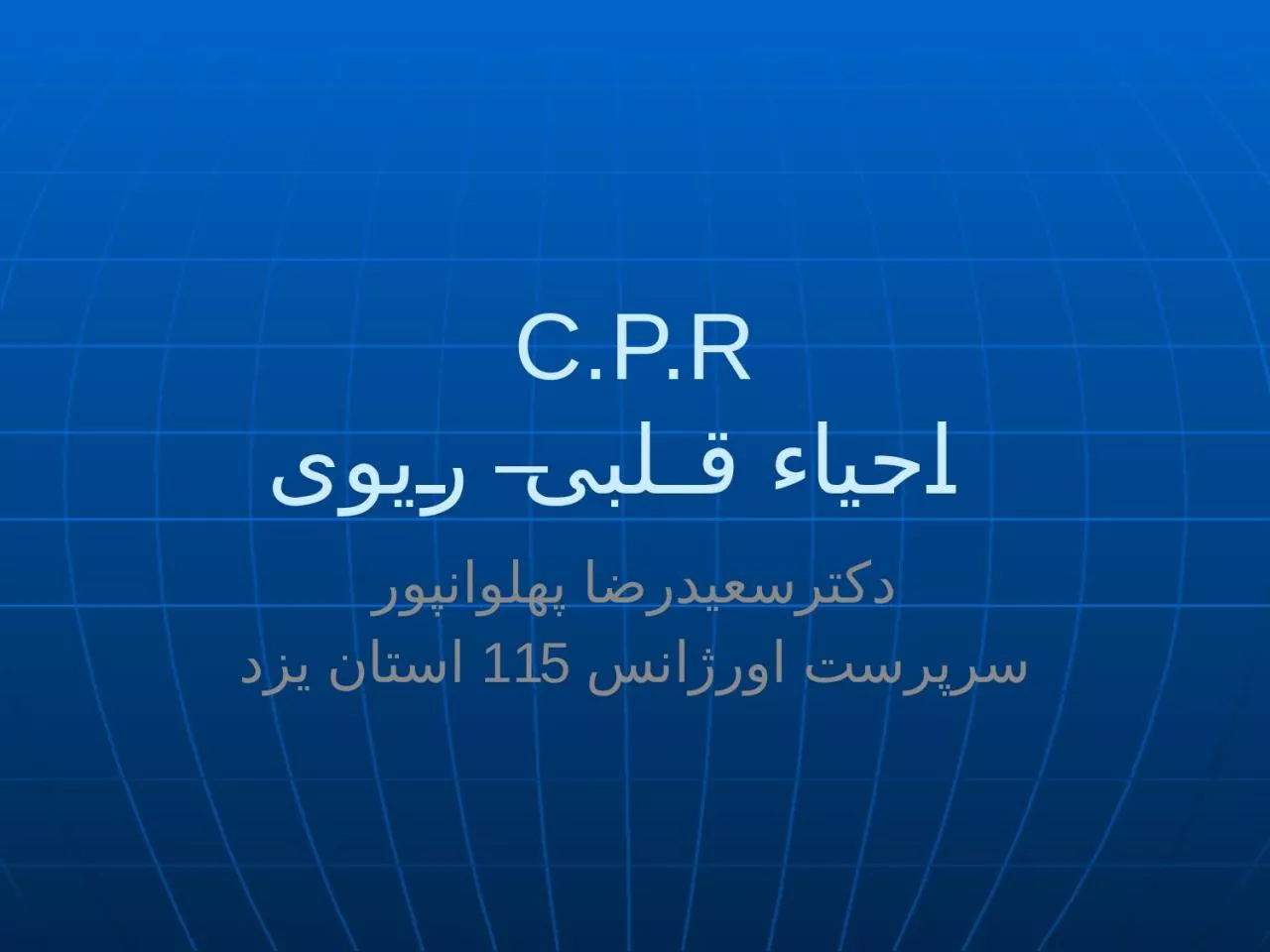PPT-C.P.R احیاء قلبی – ریوی
Author : FluffyFace | Published Date : 2022-08-04
دکترسعیدرضا پهلوانپور سرپرست اورژانس 115 استان یزد تعریف اقدامات و کوشش های سیستماتیک برای
Presentation Embed Code
Download Presentation
Download Presentation The PPT/PDF document "C.P.R احیاء قلبی – ریوی" is the property of its rightful owner. Permission is granted to download and print the materials on this website for personal, non-commercial use only, and to display it on your personal computer provided you do not modify the materials and that you retain all copyright notices contained in the materials. By downloading content from our website, you accept the terms of this agreement.
C.P.R احیاء قلبی – ریوی: Transcript
Download Rules Of Document
"C.P.R احیاء قلبی – ریوی"The content belongs to its owner. You may download and print it for personal use, without modification, and keep all copyright notices. By downloading, you agree to these terms.
Related Documents

